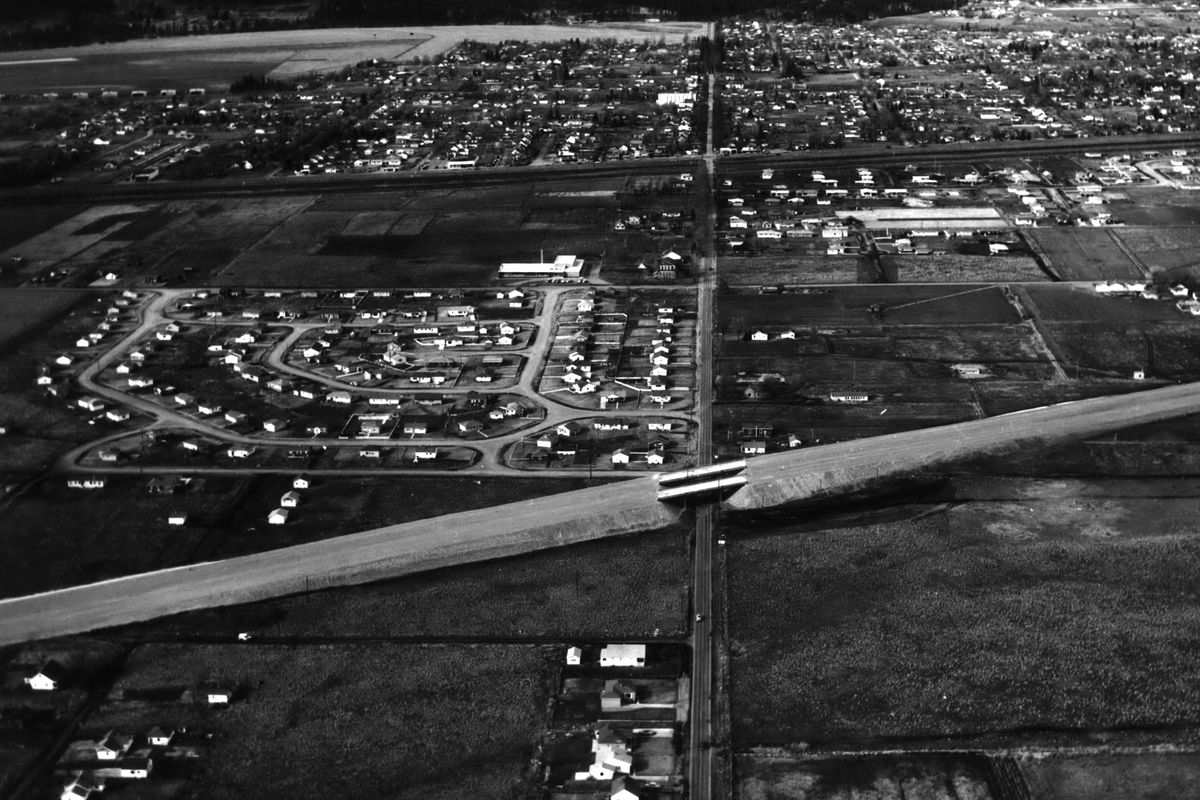Then and Now: Spokane Valley Freeway

Even before the Federal-Aid Highway Act of 1956 created the funding mechanism for a national highway system, the Washington State Department of Transportation was already working on improving the U.S. Highway 10 corridor through Spokane with its replacement.
“We have been working on it seven or eight years,” said J.R. Tillman, district engineer for the state highway department, while reporting to the Spokane City Council in 1955.
The stretch of new freeway from the eastern Spokane city limits to the Liberty Lake exit was first called the Spokane Valley Freeway and designed with eight access points at Sprague and Broadway avenues, and Argonne, Pines, Sullivan, Barker roads, as well as in Liberty Lake.
The first 5-mile segment of the Spokane Valley Freeway, between Havana Street and Pines Road, opened in 1956.
Businessman James McGoldrick, once the director of the Spokane Area Good Roads Association, told The Spokesman-Review about the first time he drove the freeway in Spokane, “God, it was a fantastic thing. It was a momentous occasion,” McGoldrick said in 2006, the 50th anniversary of the highway. “The community grew up because of the I-90 freeway,” he added. “It was the major thing that happened for Spokane. … It connected it to the whole rest of the country.”
Park Road, the two-lane north-south arterial just east of the Broadway offramp, would pass under the new freeway carrying traffic from the Millwood area to the Sprague Avenue corridor through the Spokane Valley.
Over the years, the Interstate would see many changes and improvements.
As the region’s population grew, Spokane Valley’s two lanes in each direction became a traffic bottle neck and state planners began planning in 1997 to widen the freeway to three lanes in each direction from the Sprague curve to Argonne at an estimated cost of $59 million. A new Park Road overpass bridge, with four lanes, was built in 2000. WSDOT project manager Greg Lahti told The Spokesman-Review in 1999 that the original freeway bridges had caused accidents because of the slope of the roadway.
The Department of Transportation purchased land near Park Road for the freeway widening and the new overpass. After the highway construction completed, land was added to the playfields at Centennial Middle School, built in 1989.